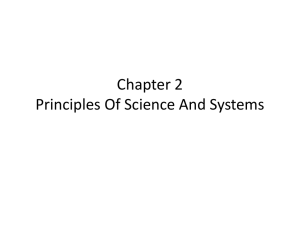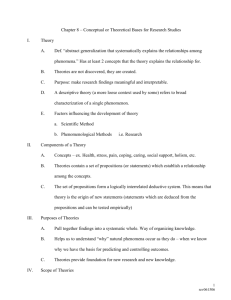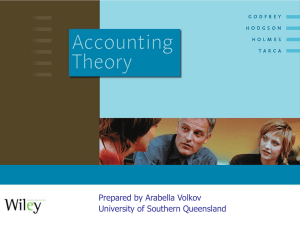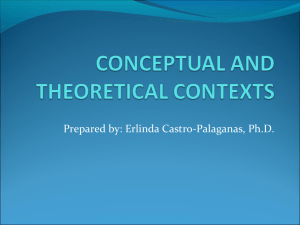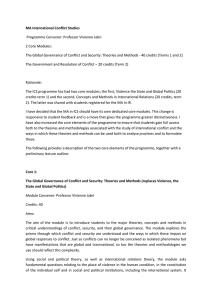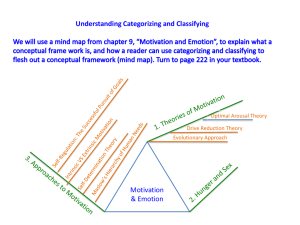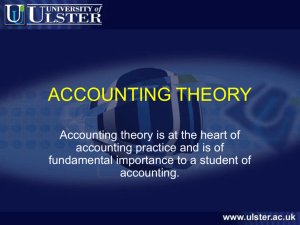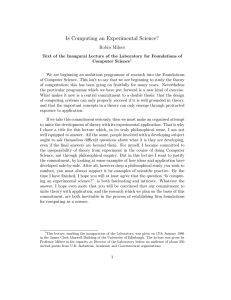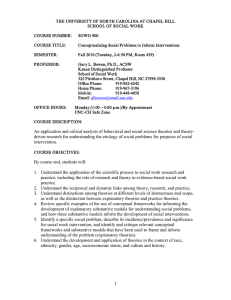Comparing Political Systems
advertisement
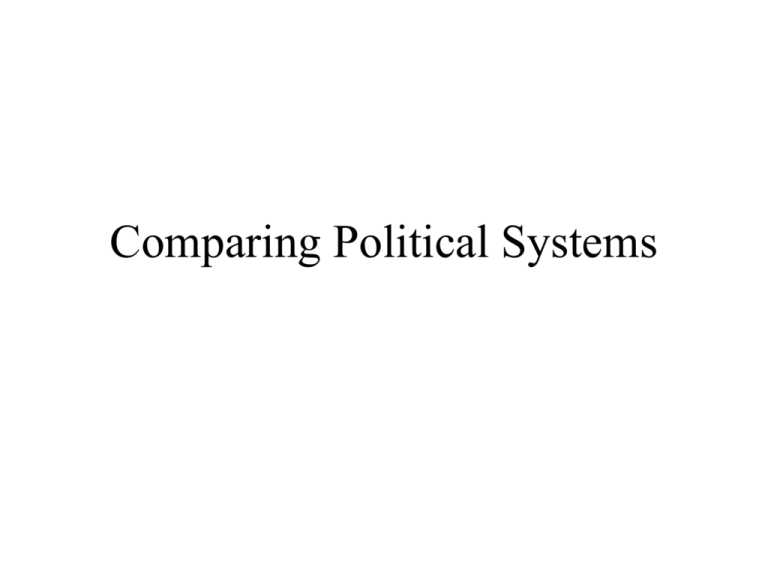
Comparing Political Systems Why Compare • To develop perspective on the mix of constants and variability which characterize the world’s governments and the contexts in which they operate • Comparison is fundamental to all thought and constitutes the methodological core of the scientific method • It is the only way to fully understand one’s own political system. Why Compare • In societies researchers cannot design and perform experiments and observe the effects. • Examples: (1) Social Revolution – could never start one and attempt to observe the outcome. (2) Military escalation – could not initiate an escalation simply to see if it would lead to war. Comparison Allows … • The description and explanation of different combinations of political institutions and events across societies. • Eg: comparison of democracies – what combination of conditions and characteristics are associated with that form of government? • Encourages the development of theories of political relationships – which are testable via comparisons of the experiences of many institutions and settings. How to Compare • Description, explanation, prediction • Stage One: Description – Need a conceptual framework • Stage Two: Explanation – Identify relationships between political phenomena • Stage Three: Prediction – Putting political relationships in causal terms to systematically identify causes and effects of relationships. How to Compare • Conceptual frameworks, relationships and causality = theory building and testing. • Research question: what is the relationship between democracy and peace? – Theoretical construct: countries are peaceful because they are democratic • Causal relationships/statements: – Only authoritarian governments start wars. – Democracy guarantees peace – Authoritarian governments tend to be more warlike than democracies. Theories • An interrelated set of hypotheses that express a relationship between variables. • Theories are testable and falsifiable • Theories can never be “proved” they can fail to be falsified. • “God created the earth” is a statement of faith not necessarily a theory of creation. – Why? Good theories • Theories are good when they hold up (or fail to be falsified) to repeated testing. – Eg: anthropology – the study of the fossil record – the entire discipline dedicated to testing the theory of evolution (in one sense). – Theories are more or less testable in the comparative context when we can examine a number of cases • Large N versus Small N studies • Sufficient number and variety of cases to allow a full examination of the relationships between variables…versus the absence of this. Comparative Methodological Approaches • Case Study – intensive study of a single instance – Provides a detailed account of an episode or theme falling into a wider category • Focused Comparisons – intensive comparison of a few instances • Statistical Approaches – quantitative assessment of the impact of variables Statistical versus Case studies • Statistical studies are large N studies. – Statistical studies allow precise numeric explanation of variable relationships. • Case studies are small N studies. – Case studies allow in-depth understanding of variables and their relationships. – Case studies allow better hypothesis testing at the statistical level (eg; have we developed the best hypothesis for testing?). Problems with Comparison • Conceptual Stretching – Concepts are not equal across societies – Functional equivalents exist and must be identified (coup vs election). • Selection Bias – Tendency is to study what we know (west) – Problems emerge with our ability to generalize • Too Many Variables, Too Few Countries – 180 states – All 180 are different • Interdependence – Model of statehood diffused from Europe – Historic transitions: industrialization>colonialism>decolonialism>democratiza tion>marketization>globalization Conceptual Frameworks: Systems • Structural-Functional approach – Identify the system, the structures and the functions of structures – Political systems are comprised of sets of institutions interacting to formulate the collective goals of a society. Governments form the policymaking elements of these systems (separate from members of society). Conceptual Frameworks: Structure • Governments have component parts – agencies or STRUCTURES – – – – Parliaments Bureaucracies Administrative agencies Courts Policies are the goals; structures are the means Political Regimes: the structural-functional configuration of governments at different times. Conceptual Frameworks: Functions • Functions – the service or activity performed by the component of the political system • Is structural-functionalism a strong approach to political analysis? – – – – Biased in favor of status quo? Allows application despite space and time Does not provide the why (explanation is absent) Provides the foundational information about systems without which researchers cannot begin to formulate and answer to the Why question. Functions (notes and implications) • Function implies both direct and indirect purpose • System Functions: – Political socialization, recruitment, communication (comparison is possible across these variables) • Process Functions: – Interest articulation, interest aggregation, interest adjudication • Policy Functions: – Impact on society, economy, culture; interaction with international environment, extraction, regulation of behavior, distribution The Policy Level • Performance, outcome and evaluation – Is the policy relevant to the needs/interests of society – Evaluation of performance – Response to value change – Degree of stability or adaptability


